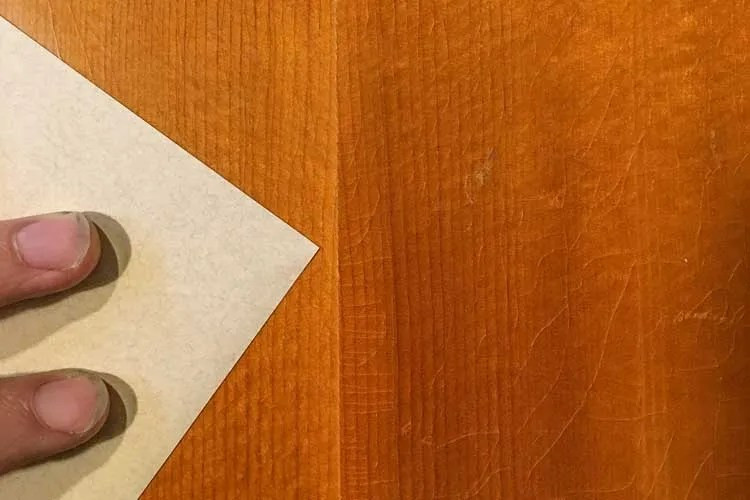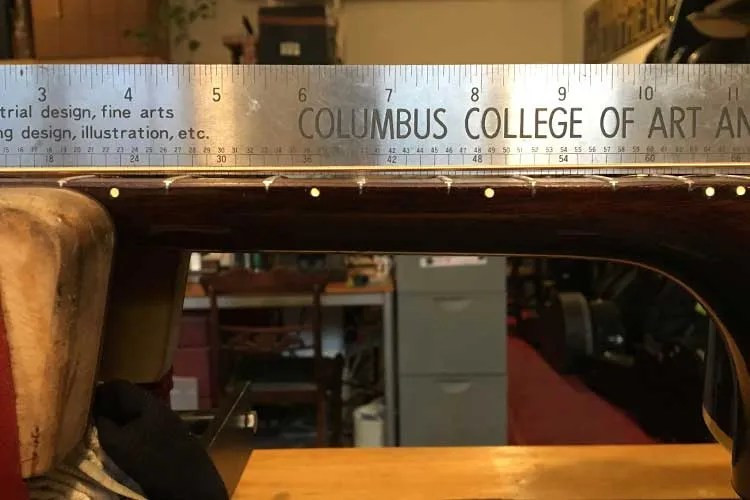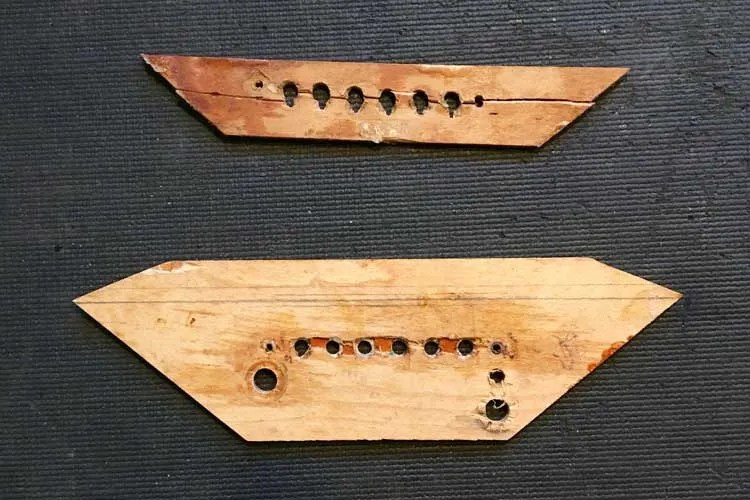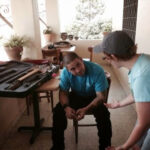Shopping for a guitar can be an exciting journey, and if you’re in the market, exploring the world of Used Guitars opens up a realm of possibilities. Opting for a used instrument can be a smart move for various reasons. Primarily, it often presents a significant value proposition, allowing you to acquire a higher-quality instrument for your budget compared to buying new. Beyond the financial aspect, used guitars, especially vintage models, possess a unique character and sound that is simply unattainable with brand-new instruments. If the allure of a vintage tone and aesthetic resonates with you, then a used guitar might just be your perfect match.
Navigating the used guitar market requires a bit of know-how, but with the right guidance, you can confidently find a gem that suits your needs and playing style. This guide is designed to equip you with the knowledge to make informed decisions when buying a used guitar. We’ll break down the process into key areas, covering everything from identifying your ideal instrument to assessing its condition and ensuring you feel good about your investment.
This guide is structured to provide a comprehensive overview in three key parts:
Part One: Defining Your Needs and Exploring the Market
In this section, we’ll delve into how to pinpoint the type of guitar that aligns with your musical aspirations and playing level. We’ll also explore the various avenues available for finding used guitars, from online marketplaces to local dealers, and discuss the pros and cons of each.
Part Two: Essential Inspection Techniques for Used Guitars
Purchasing a used guitar often means considering instruments that might have some wear and tear or require minor repairs. This part will equip you with the essential tools and techniques for thoroughly inspecting a used guitar. We’ll cover what to look for in terms of structural integrity, potential issues, and repairs that are easily manageable versus those that might be red flags.
Part Three: Deep Dive Inspection: Beyond the Basics
Taking your inspection a step further is crucial when investing in a used guitar. Here, we’ll discuss how to assess internal components like bracing and the bridge plate, which are vital for a guitar’s longevity and sound. We’ll also focus on evaluating neck angle, a critical factor in playability and long-term maintenance, including understanding when a neck reset might be necessary.
Part One: Defining Your Needs and Exploring the Market for Used Guitars
Before diving into the search for a used guitar, it’s essential to clarify your own needs and preferences. Ask yourself: What kind of music do you want to play? What is your current skill level? Are you a beginner just starting your guitar journey, or are you an experienced player with specific tonal preferences? Perhaps you’re captivated by the sound of a specific vintage instrument, like a classic 1940s Gibson J-45 with its iconic banner headstock.
Starting with a vision of your ideal used guitar is a great approach. The next step is to immerse yourself in the experience of playing as many guitars as possible. This hands-on approach is invaluable for understanding what feels comfortable in your hands, what sounds resonate with your ears, and for gaining a realistic understanding of pricing. Don’t rush this process. Exploring different used guitars is an educational journey in itself. By seeing what’s available, you’ll refine your understanding of the market and might even adjust your initial vision as you discover new possibilities.
Where are the best places to find used guitars? Several options exist, each with its own advantages.
- Vintage Guitar Dealers: These specialized dealers are a treasure trove for used guitars, especially vintage and higher-end models. Shopping at a dealer allows you to physically inspect and play instruments in person.
- Private Sales: Buying directly from individuals can sometimes offer the most competitive prices on used guitars. Online marketplaces and local classifieds are good places to find private sellers.
- Online Auctions and Marketplaces: Platforms like eBay and Reverb host a vast selection of used guitars. These online avenues provide wide access but require careful evaluation of seller reputation and return policies.
Ideally, getting a used guitar in your hands before purchasing is always recommended. Playing the instrument allows you to assess its feel, sound, and overall condition firsthand. Remember, even within the same model, like two 1965 Martin D-18s, each used guitar will possess unique sonic and tactile characteristics.
The internet is an invaluable resource for researching used guitars, comparing prices, and finding sellers. When buying online, prioritize sellers with strong communication and clear return policies in case the used guitar doesn’t meet your expectations or is not as described. Regardless of where you choose to shop for a used guitar, knowing how to conduct a thorough inspection is paramount, a topic we will explore in detail in the next section.
It’s important to manage your expectations about finding unbelievably low deals. The internet has largely leveled the playing field, making it easier for sellers to determine the fair market value of their instruments. Therefore, when budgeting for a used guitar, plan to pay a reasonable price that aligns with market values in your area.
Also, factor in potential repair costs when buying a used guitar. Older instruments often require some level of maintenance. At a minimum, budget for a professional setup, which includes truss rod adjustments, saddle height adjustments, and nut slot adjustments. This typically costs around $65 or more. More extensive repairs, such as crack repairs, neck resets, or refrets, can significantly increase the overall cost of a used guitar.
Private sales of used guitars can be appealing due to potentially lower prices, but it’s crucial to understand the seller’s motivation. Is the used guitar being sold because it requires repairs that the owner is unwilling or unable to address?
This is where vintage guitar dealers offer a distinct advantage when buying used guitars. Reputable dealers usually have in-house repair departments and thoroughly inspect and service instruments before offering them for sale. While used guitars from dealers may have a higher price tag compared to private sales, this markup reflects the added value of their expertise and the assurance that the instrument has been vetted and, if necessary, repaired. A dealer should be transparent about the history and condition of a used guitar, including any repairs performed or still needed. Trust your instincts when interacting with a dealer. Look for dealers with positive reputations who are responsive to your questions and inspire confidence. For buyers seeking peace of mind and a curated selection of used guitars, a reputable vintage dealer can be an excellent choice.
Visiting both vintage dealers and local music stores is highly recommended in your search for a used guitar. Don’t solely rely on online listings. Engaging with knowledgeable people in guitar shops is incredibly beneficial. For example, if you’re drawn to the sound of an older small-bodied mahogany Martin 00-15 but find it beyond your budget, a dealer can suggest excellent alternatives. They might point you towards a Guild M-20, famously played by Nick Drake, as a comparable used guitar option.
Part Two: Essential Inspection Techniques for Used Guitars
You’ve identified the type of used guitar you’re interested in, researched market prices, and started exploring available instruments. Now, it’s time to learn how to assess the condition of a used guitar and identify potential issues. Remember that almost every used guitar will benefit from a professional setup, typically costing between $60 and $100, so factor this into your budget from the outset. The repair costs mentioned below are general estimates and can vary based on location and technician expertise. Avoid simply choosing the cheapest repair quote, especially for vintage used guitars. Quality repairs are an investment in the instrument’s longevity and sound.
Let’s begin the inspection of a used guitar with a:
Visual Once-Over
Hold the used guitar and carefully examine the top, back, and sides. The finish can reveal a lot about the guitar’s history. Look for signs of moisture damage, impacts, or inconsistent coloring. Are there any noticeable dings or areas where the finish is flaking?
Pay close attention to the body for any cracks or seam separations. If cracks are present, check if the exposed wood is dark or if the surrounding wood is warped. Fresh, clean cracks are less concerning than older, neglected ones. Neatly repaired seams or cracks on a used guitar are generally not a major issue. However, open seams or cracks requiring repair will add to your expense, typically ranging from $50 to $150.
A neatly repaired lower-bout seam separation on a used guitar is generally not a cause for concern.
Inspect the bridge of the used guitar. Ensure it is firmly glued to the top. Try sliding a piece of paper under the edges and corners of the bridge. If the paper slides under any part of the bridge, it indicates that the bridge needs to be removed and reglued – a critical repair that shouldn’t be delayed. A loose bridge negatively impacts the sound and puts undue stress on the guitar’s top. Avoid putting string tension on a used guitar with a loose bridge until it’s repaired. Bridge reglues can cost between $150 and $300.
Next, examine the neck joint of the used guitar. Look for any irregularities, finish chipping, or discoloration around the heel. Chipping or discoloration might indicate a previous neck reset, which, if well-executed, is actually a positive sign – it means you likely won’t need to pay for one soon. Many used guitars, especially vintage Martins, will require neck resets at some point in their lifespan. We’ll discuss how to identify a potential need for a future neck reset later.
A neck heel pulling away from the body on a used guitar is a significant issue and could indicate a problem instrument.
Neck Check
The neck is a vital component of a used guitar. A slight neck relief (a slight forward bow) is normal, but excessive relief, twists, or unevenness (rollercoaster neck) are potential deal-breakers.
Here’s a simple method to check neck straightness. Hold the used guitar in playing position, with the body facing you. Point the headstock towards your eye and sight along the neck from the headstock towards the body. Closing one eye can help. This technique uses foreshortening to visually highlight any major irregularities, dips, humps, or slopes in the neck.
For a more precise assessment of a used guitar‘s neck, bring an 18-inch straightedge. Lay it along the frets while the guitar is strung to pitch. This will reveal the amount of neck relief. Ideally, you should be able to slip a 0.010-inch feeler gauge under the string at the 8th fret. A luthier can then adjust the neck relief as needed.
Using a straightedge to assess neck straightness on a used guitar.
Play the Darn Thing
If the visual and neck checks are satisfactory, it’s time to play the used guitar. Bring your preferred pick, a capo, and perhaps a friend to listen from a distance. Play various musical passages to test the guitar’s responsiveness and identify any shortcomings. This is the perfect opportunity to evaluate the neck comfort and the condition of the frets. Minor fret issues like a few high or low frets can often be resolved with a fret dress, costing $50-$150. However, if the frets are severely worn and flattened from multiple fret dressings, a refret is necessary. Refrets are more expensive, especially on used guitars with bound fingerboards or fingerboards made of maple or brittle ebony, and can range from $250 to $600.
A neck reset on a used guitar, showing evidence of disassembly and reassembly. While functional, the finish touch-up is not ideal.
Part Three: Deep Dive Inspection: Inside and Neck Angle of Used Guitars
To thoroughly evaluate a used guitar, it’s essential to go beyond the surface. In this section, we’ll explore how to inspect internal components and assess neck angle. Think of it like looking under the hood of a car – understanding these elements can reveal crucial information about the used guitar‘s health and potential longevity. Always remember that repair costs are estimates and can vary based on location and technician expertise. Prioritize quality repairs over bargain prices when investing in a used guitar.
Bridge Plates
One of the primary reasons to peek inside a used guitar is to examine the bridge plate. This piece of wood, often maple or rosewood, reinforces the guitar’s top and significantly impacts its sound and structural integrity.
When inspecting the bridge plate, look for clean, circular holes where the string ball ends and bridge pins pass through. Watch out for signs of wear, such as ragged or elongated holes, or gouging of the wood between the holes. These indicate potential bridge plate wear, often due to softer wood or prolonged use.
In severe cases, a bridge plate on a used guitar can crack, especially if a loose bridge has been left unrepaired for an extended period. Significant bridge plate wear or cracking might necessitate repair or replacement, ranging from $75 to $400, due to the complexity of removing and replacing this internal component.
While you’re looking inside, check for any cracks in the guitar’s body and whether cleats (thin wooden patches) have been used for repairs. A few cleats and neatly repaired cracks or seams on a used guitar are usually not problematic and generally don’t negatively affect the sound. In fact, the neatness of cleating can indicate the quality of previous repair work.
Worn bridge plate holes and cracks on a used guitar, indicating potential need for replacement.
Neck Resets
Finally, let’s discuss neck angle and the potential need for a neck reset on a used guitar. Over time, string tension exerts considerable force on a guitar. This tension can cause the neck angle to shift forward and the guitar’s top to flatten slightly, leading to increased string action (string height above the fretboard). Signs of neck angle issues include a very low saddle or a bridge that has been shaved down in an attempt to lower the action without addressing the neck angle. These “quick fixes” compromise the guitar’s sound by reducing the string break angle over the saddle, diminishing the energy transferred to the top.
A simple way to get a general idea of the neck angle on a used guitar (if the neck is relatively straight and the bridge is full height) is to use an 18-inch straightedge. Place the straightedge along the fretboard, extending it towards the bridge. If the straightedge rests just on top of the bridge or very close to it, the neck angle is likely good. If the straightedge points significantly below the top of the bridge, the neck angle is too shallow, and a neck reset might be necessary.
Don’t be alarmed by the prospect of a neck reset. Many excellent used guitars, including most vintage Martins, will eventually require a neck reset during their lifespan. A neck reset is a major repair, and some shops include a refret as part of the process. Due to the labor involved, neck resets can range in price from $350 to $1,000.
Visual comparison of bad neck angle (left) and good neck angle (right) on used guitars.
Conclusion: The Value of Used Guitars
Despite the potential need for repairs, buying a used guitar remains a compelling option. You often get significantly more value for your money compared to buying new, and you gain access to the unique character and mojo that only comes with a well-played instrument. Armed with this guide, you are now better equipped to confidently navigate the used guitar market and find the broken-in guitar of your dreams.


 AG302_expert_3
AG302_expert_3 AG303_expert4
AG303_expert4